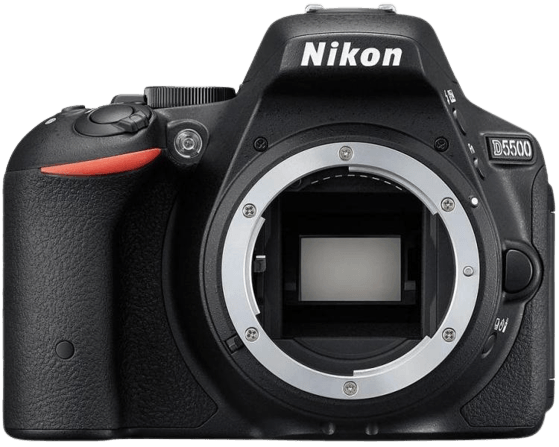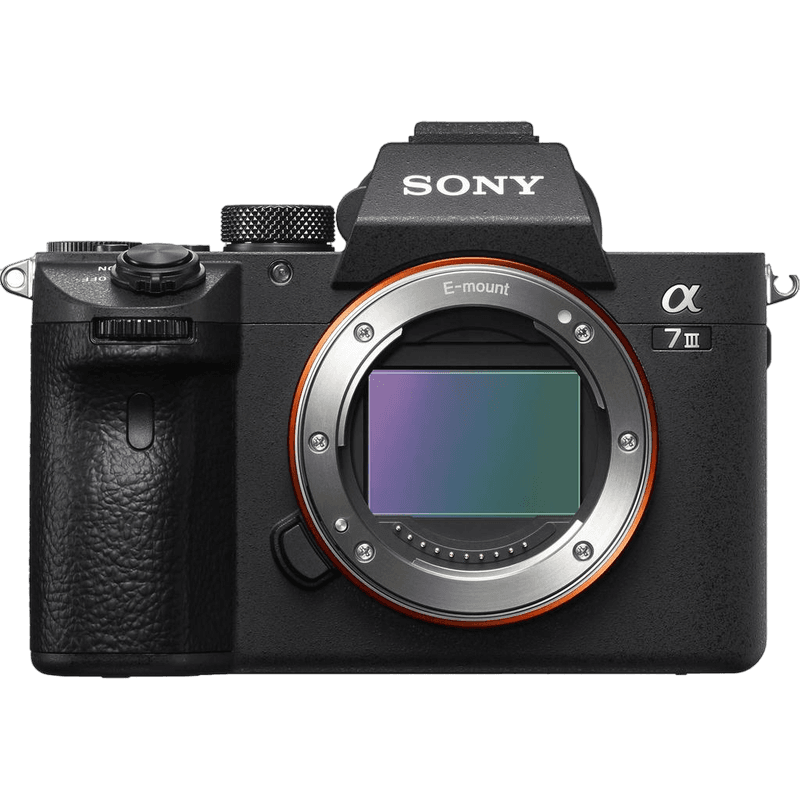Nikon D5500 vs Sony a7 III Comparison
Nikon D5500

Sony a7 III

The Sony a7 III takes the lead with a score of 80/100, outperforming the Nikon D5500 which has a score of 61/100. Both cameras were released with a few years between them, the Nikon D5500 in 2015 and the Sony a7 III in 2018. They share similarities in size, with the Nikon D5500 measuring 124 x 97 x 70mm and the Sony a7 III at 127 x 96 x 74mm.
The Sony a7 III, being a mirrorless camera, is better in terms of technology, offering faster autofocus and improved image quality. However, the Nikon D5500, as a DSLR, has the advantage of being lighter, weighing only 420g compared to the Sony a7 III at 650g.
When considering the launch price, the Nikon D5500 is more budget-friendly with a price tag of $900, while the Sony a7 III sits at a higher $2000. While the Sony a7 III outperforms the Nikon D5500, the Nikon camera still provides value for those looking for a lighter and more affordable option.
Nikon D5500 vs Sony a7 III Overview and Optics
The Sony a7 III emerges as the winner in the optics comparison with a score of 81/100, surpassing the Nikon D5500, which scored 65/100. Both cameras share certain specifications, such as 24.2 megapixels and a CMOS sensor type. However, it is the differences that set them apart and contribute to the Sony a7 III’s higher score.
The Sony a7 III excels due to its superior shooting speed of 10, compared to the Nikon D5500’s 5. Additionally, the Sony a7 III has a higher DXOMARK score for the sensor at 96, while the Nikon D5500’s score is 84. The Sony a7 III also boasts a full-frame sensor size, whereas the Nikon D5500 has an APS-C sensor size. The lens mount for the Sony a7 III is the Sony FE, and the camera includes image stabilization.
The Nikon D5500, despite its lower score, has some advantages. It features a Nikon F DX lens mount and is equipped with an Expeed 4 processor. Although the Nikon D5500 lacks image stabilization, its processor is still a solid choice for photography enthusiasts.
In the end, the Sony a7 III’s superior shooting speed, higher sensor score, full-frame sensor size, and image stabilization make it a better choice for those seeking advanced optics. The Nikon D5500, while not as impressive in the optics department, is still a reliable option for casual photographers or those on a budget.
Nikon D5500 vs Sony a7 III Video Performance
The Nikon D5500 outperforms the Sony a7 III in video capabilities with a score of 70/100 as opposed to the Sony a7 III’s 56/100. Both cameras share some common video specifications, such as having built-in microphones and HDMI output. However, there are key differences that make the Nikon D5500 a superior choice for video recording.
The Nikon D5500 offers a higher maximum video frame rate of 60fps, compared to the Sony a7 III’s 30fps. This allows the Nikon D5500 to capture smoother video footage, particularly in fast-paced situations or when recording slow-motion scenes. Additionally, the Nikon D5500 features built-in time-lapse functionality, enabling users to create stunning time-lapse videos without the need for additional equipment or software.
On the other hand, the Sony a7 III boasts a 4K video resolution, resulting in higher video quality than the Nikon D5500’s Full HD resolution. However, this advantage is somewhat diminished by the lower frame rate, which can make the footage appear less smooth.
Regarding the video capabilities of both cameras, the Nikon D5500 stands out as the better choice due to its higher video score, faster frame rate, and built-in time-lapse functionality. While the Sony a7 III offers higher video resolution, its lower frame rate may not be suitable for all users, particularly those seeking to capture smooth footage in high-paced scenarios. Ultimately, the Nikon D5500 provides a more versatile and user-friendly video experience.
Nikon D5500 vs Sony a7 III Features and Benefits
The Sony a7 III outperforms the Nikon D5500 with a feature score of 81/100 compared to 59/100. Both cameras share several specifications, including touchscreen capabilities, flip screens, WIFI connectivity, and the absence of GPS. Despite these similarities, the Sony a7 III surpasses the Nikon D5500 in specific areas, contributing to its higher score.
The Sony a7 III offers Bluetooth connectivity, which the Nikon D5500 lacks. This feature allows for seamless file transfers and remote control options, enhancing the user’s experience. Additionally, the Sony a7 III has a more robust build, providing increased durability for various shooting conditions.
The Nikon D5500, however, excels in screen size and resolution. With a 3.2-inch screen and a resolution of 1,037,000 dots, it surpasses the Sony a7 III’s 3-inch screen and 921,600-dot resolution. This advantage grants the user a clearer and more detailed view of their images, aiding in composition and review.
Despite the Nikon D5500’s superior screen size and resolution, the Sony a7 III’s higher feature score indicates that it is a more versatile and well-rounded camera. The addition of Bluetooth connectivity and a more durable build contribute to its overall superiority. While the Nikon D5500 may offer a better display, the Sony a7 III remains the preferred choice for those seeking a camera with a broader range of features and improved performance.
Nikon D5500 vs Sony a7 III Storage and Battery
The Sony a7 III outperforms the Nikon D5500 in the storage and battery category, scoring 68/100 compared to the Nikon’s 35/100. Both cameras possess similarities, such as accepting SD, SDHC, and SDXC memory cards and lacking USB charging capabilities.
The Sony a7 III excels with its dual memory card slots, which also support Memory Stick Duo, Pro Duo, and Pro-HG Duo formats. This feature allows for greater storage capacity and versatility. However, the Nikon D5500 has a slightly longer battery life, offering 820 shots per charge compared to the Sony’s 750 shots.
Despite the Nikon D5500’s marginally superior battery life, the Sony a7 III’s overall storage and battery capabilities make it the better choice. The dual memory card slots and compatibility with various memory card formats give users more flexibility and options for their photography needs.
Nikon D5500 vs Sony a7 III – Our Verdict
Are you still undecided about which camera is right for you? Have a look at these popular comparisons that feature the Nikon D5500 or the Sony a7 III:

